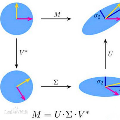The integration of reduced-order models (ROMs) with high-performance computing (HPC) is critical for developing digital twins, particularly for real-time monitoring and predictive maintenance of industrial systems. This paper presents a comprehensive, HPC-enabled workflow for developing and deploying projection-based reduced-order models (PROMs) for large-scale mechanical simulations. We use PyCOMPSs' parallel framework to efficiently execute ROM training simulations, employing parallel singular value decomposition (SVD) algorithms such as randomized SVD, Lanczos SVD, and full SVD based on tall-skinny QR (TSQR). Moreover, we introduce a partitioned version of the hyper-reduction scheme known as the Empirical Cubature Method (ECM) to further enhance computational efficiency in PROMs for mechanical systems. Despite the widespread use of HPC for PROMs, there is a significant lack of publications detailing comprehensive workflows for building and deploying end-to-end PROMs in HPC environments. Our workflow is validated through a case study focusing on the thermal dynamics of a motor, a multiphysics problem involving convective heat transfer and mechanical components. The PROM is designed to deliver a real-time prognosis tool that could enable rapid and safe motor restarts post-emergency shutdowns under different operating conditions, demonstrating its potential impact on the practice of simulations in engineering mechanics. To facilitate deployment, we use the Workflow as a Service (WaaS) strategy and Functional Mock-Up Units (FMUs) to ensure compatibility and ease of integration across HPC, edge, and cloud environments. The outcomes illustrate the efficacy of combining PROMs and HPC, establishing a precedent for scalable, real-time digital twin applications in computational mechanics across multiple industries.
翻译:暂无翻译





